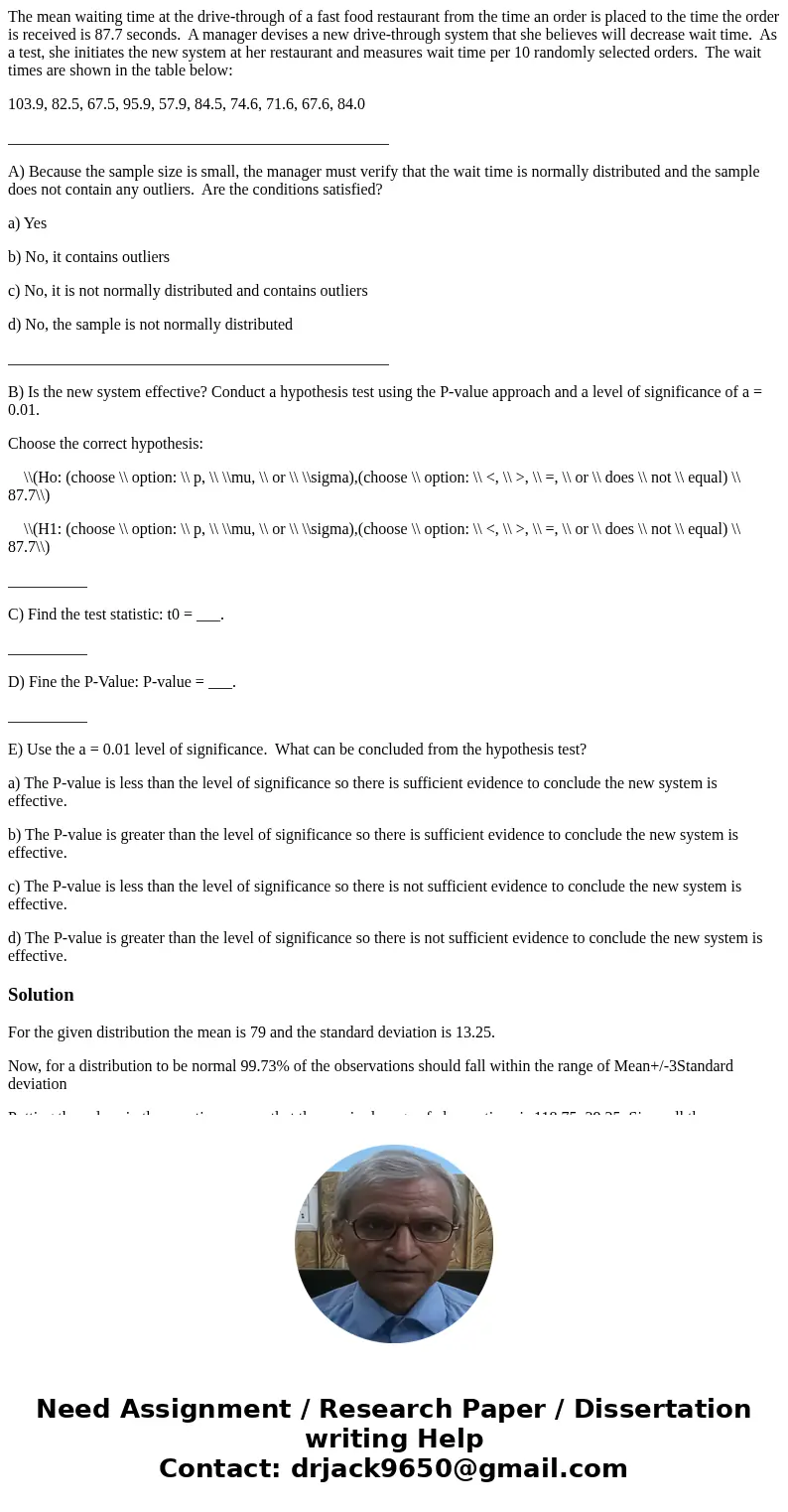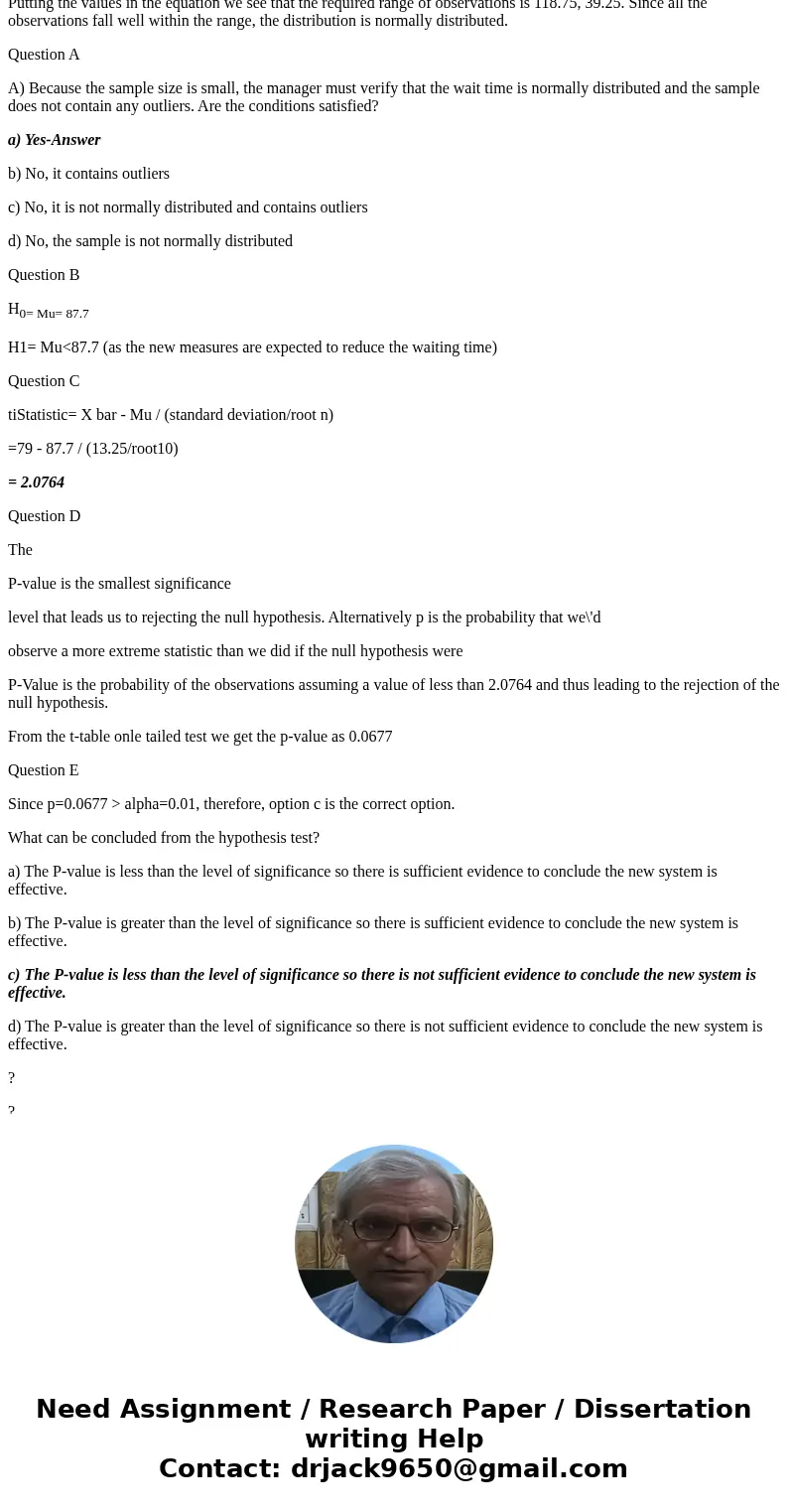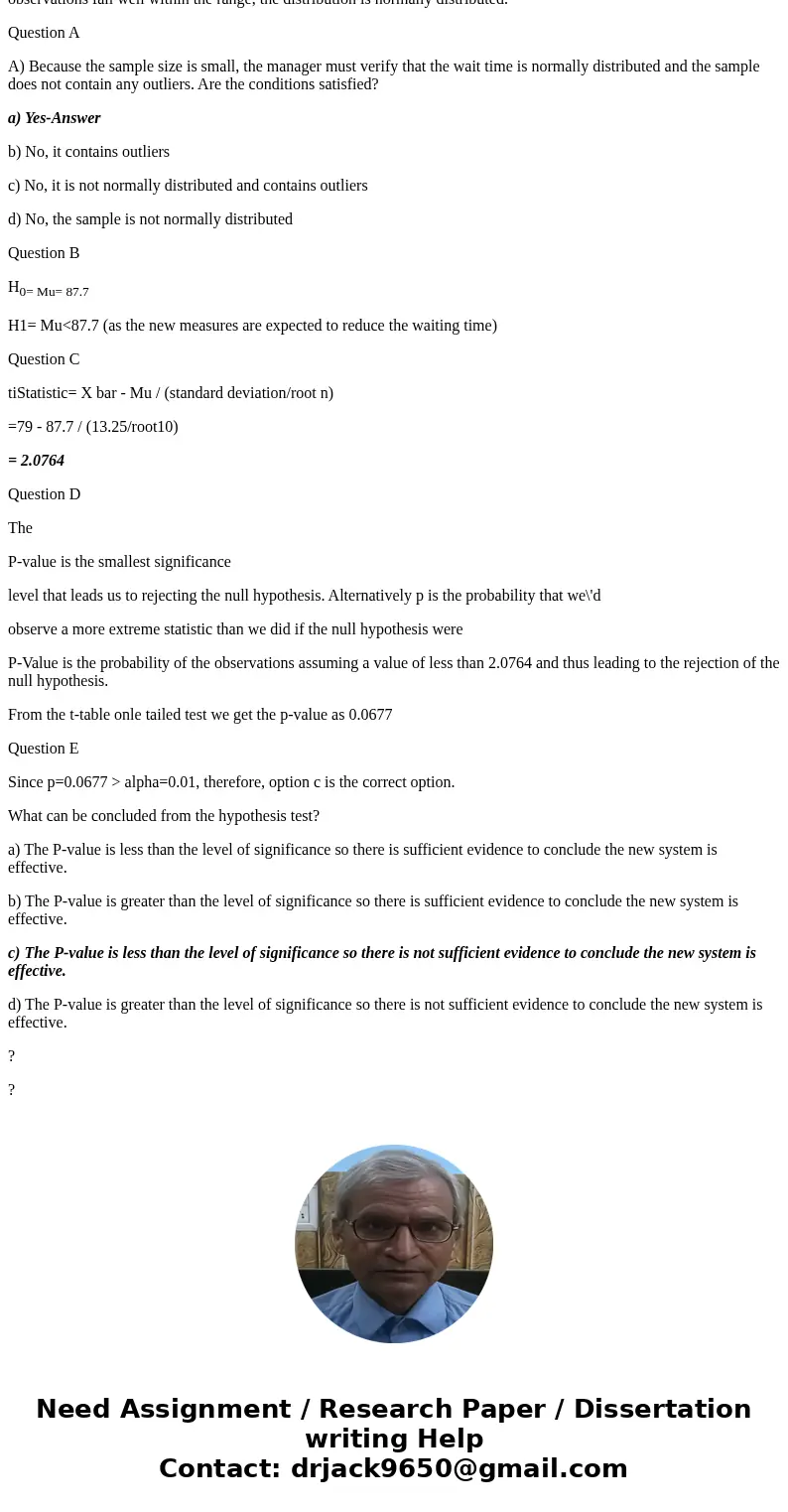The mean waiting time at the drivethrough of a fast food res
The mean waiting time at the drive-through of a fast food restaurant from the time an order is placed to the time the order is received is 87.7 seconds. A manager devises a new drive-through system that she believes will decrease wait time. As a test, she initiates the new system at her restaurant and measures wait time per 10 randomly selected orders. The wait times are shown in the table below:
103.9, 82.5, 67.5, 95.9, 57.9, 84.5, 74.6, 71.6, 67.6, 84.0
________________________________________________
A) Because the sample size is small, the manager must verify that the wait time is normally distributed and the sample does not contain any outliers. Are the conditions satisfied?
a) Yes
b) No, it contains outliers
c) No, it is not normally distributed and contains outliers
d) No, the sample is not normally distributed
________________________________________________
B) Is the new system effective? Conduct a hypothesis test using the P-value approach and a level of significance of a = 0.01.
Choose the correct hypothesis:
\\(Ho: (choose \\ option: \\ p, \\ \\mu, \\ or \\ \\sigma),(choose \\ option: \\ <, \\ >, \\ =, \\ or \\ does \\ not \\ equal) \\ 87.7\\)
\\(H1: (choose \\ option: \\ p, \\ \\mu, \\ or \\ \\sigma),(choose \\ option: \\ <, \\ >, \\ =, \\ or \\ does \\ not \\ equal) \\ 87.7\\)
__________
C) Find the test statistic: t0 = ___.
__________
D) Fine the P-Value: P-value = ___.
__________
E) Use the a = 0.01 level of significance. What can be concluded from the hypothesis test?
a) The P-value is less than the level of significance so there is sufficient evidence to conclude the new system is effective.
b) The P-value is greater than the level of significance so there is sufficient evidence to conclude the new system is effective.
c) The P-value is less than the level of significance so there is not sufficient evidence to conclude the new system is effective.
d) The P-value is greater than the level of significance so there is not sufficient evidence to conclude the new system is effective.
Solution
For the given distribution the mean is 79 and the standard deviation is 13.25.
Now, for a distribution to be normal 99.73% of the observations should fall within the range of Mean+/-3Standard deviation
Putting the values in the equation we see that the required range of observations is 118.75, 39.25. Since all the observations fall well within the range, the distribution is normally distributed.
Question A
A) Because the sample size is small, the manager must verify that the wait time is normally distributed and the sample does not contain any outliers. Are the conditions satisfied?
a) Yes-Answer
b) No, it contains outliers
c) No, it is not normally distributed and contains outliers
d) No, the sample is not normally distributed
Question B
H0= Mu= 87.7
H1= Mu<87.7 (as the new measures are expected to reduce the waiting time)
Question C
tiStatistic= X bar - Mu / (standard deviation/root n)
=79 - 87.7 / (13.25/root10)
= 2.0764
Question D
The
P-value is the smallest significance
level that leads us to rejecting the null hypothesis. Alternatively p is the probability that we\'d
observe a more extreme statistic than we did if the null hypothesis were
P-Value is the probability of the observations assuming a value of less than 2.0764 and thus leading to the rejection of the null hypothesis.
From the t-table onle tailed test we get the p-value as 0.0677
Question E
Since p=0.0677 > alpha=0.01, therefore, option c is the correct option.
What can be concluded from the hypothesis test?
a) The P-value is less than the level of significance so there is sufficient evidence to conclude the new system is effective.
b) The P-value is greater than the level of significance so there is sufficient evidence to conclude the new system is effective.
c) The P-value is less than the level of significance so there is not sufficient evidence to conclude the new system is effective.
d) The P-value is greater than the level of significance so there is not sufficient evidence to conclude the new system is effective.
?
?



 Homework Sourse
Homework Sourse